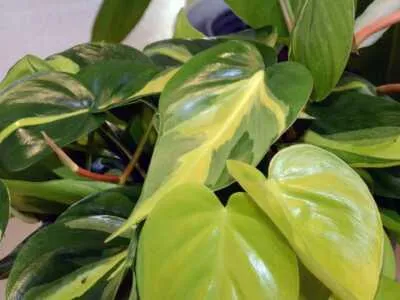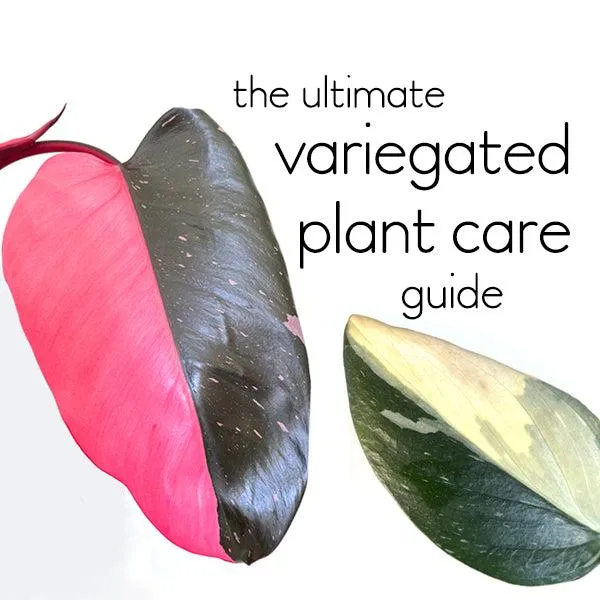The Best Variegated Houseplants to Brighten Your Home
If you’re looking to add some visual interest and patterns to your indoor plant collection, variegated plants are a great choice. Their colorful leaves offer a unique aesthetic compared to traditional green foliage. In this article, I’ll cover some of the top variegated houseplant varieties and provide care tips to keep them thriving.
What is Variegation?
Before getting into specific plant recommendations, it’s helpful to understand what gives variegated plants their distinctive look. Variegation refers to parts of the leaves having a different pigmentation than the main color. Most commonly, areas will be white, cream, yellow or pink amongst green foliage. This unique patterning is caused by a genetic mutation that prevents certain areas of leaves from producing chlorophyll.
The variegation can come in many patterns like stripes, spots, margins or half-and-half coloration. Regardless of the exact marking, it adds visual interest compared to traditional solid green leaves. These patterns tend to be fairly stable and will replicate with each new leaf growth. However, stressors like too much sun can sometimes cause a reversion back to all green leaves on certain parts of the plant.
Easy Care Variegated Houseplants
- Pothos – Golden or Marble Queen pothos are classic low maintenance options. Their trailing vines look beautiful draped over shelves or trailing from hanging baskets. Pothos can thrive in low light and are very hardy. They’re basically impossible to kill!
- Chinese Evergreens – With their lush, thick leaves adorned with creamy white variegation, Chinese evergreens add a tropical flair. Varieties like ‘Tricolor’ are excellent for medium to low light areas. They can take quite a bit of under watering too.
- Peperomia – These terra cotta-colored succulent-like plants come in an array of variegated forms. Try ‘Rosso’ with its red undersides or ‘Watermelon’ featuring peach splotches. Peperomias enjoy bright indirect light and require infrequent watering.
The above varieties have earned a reputation as “low maintenance” for good reason. From my experience, their hardiness and adaptability make them great entry-level variegated plants. But they still provide a big visual impact!
More Finicky Variegated Gems
While heartier options like pothos are quite forgiving, some variegated plants demand a bit more careful care. However, their beauty may be worth the extra effort. Here are a few to consider if you’re up for a bit more of a challenge:
- Monstera – Nothing signals “jungle vibes” in a home like the luscious split-leaf philodendron, aka Monstera. But their dense, tender leaves are prone to browning if conditions aren’t just right. Provide medium to bright indirect light and consistent moisture. Proper humidity also helps maintain their natural hardiness.
- Calathea – With their vivid patterns and intricate markings, calatheas are true statement houseplants. However, they’re infamous for dropping entire leaves at even the slightest under-watering or dry air. Maintain high humidity and watch moisture levels closely for the best success.
- Philodendron – Beyond Monstera, heartleaf and brasil philodendrons dazzle with their assortment of variegated forms. While very tolerant of low light, they still enjoy consistently moist soil to keep their lush leaves perky. Lettings slightly dry between waterings helps prevent rot.
The extra TLC required by more sensitive species is well worth it in my opinion. Seeing their vibrant variegation thrive is very rewarding. Having a grouping of “low maintenance” and “finicky” varieties offers a balance that any indoor jungle enthusiast can appreciate!
Placement and Growing Conditions
As with any houseplants, variegated species will do best when provided growing conditions that suit their individual needs. Here are some basic tips on setting up variegated plants for success based on my experience:

– Medium to bright indirect light is ideal for most. West or east-facing windows are great. Too much direct sun may cause leaf burn or loss of variegation.
– Shelter highly variegated plants from direct afternoon sun, which tends to be strongest. Monstera and calathea leaves can scorch easily.
– Maintain consistent moisture in soil. Under-watering stresses plants and can increase chances of browning. But don’t overwater either to avoid root rot.
– Position foliage plants around and under empty space in other containers for a lush, layered aesthetic. This prevents some leaves from being obscured.
– Group plants with similar care needs together. “Low maintenance” varieties may outcompete finicky options if their conditions aren’t closely matched.
– Rotate plant positions periodically to encourage even growth and prevent leaning towards the light source. This basically means kind of playing musical chairs with them!
By considering prevalent growing variables and unique plant traits in your setup, variegated houseplants really have a chance to shine. Their patterns truly pop when given suitable care.

Common Problems and Solutions
No matter how diligent our care, houseplants are still living things subject to an occasional hiccup. Here are some issues variegated plants may encounter and how to remedy them based on my own run-ins:
– Browning leaf edges – Sign of dry air. Increase humidity with a pebble tray, humidifier or by grouping plants together.
– Whole leaf browning – Underwatering or too much sun are common culprits here. Rehydrate soil and adjust lighting.
– Yellowing leaves – Potential nutrient deficiency, overwatering, or light stress. Check fertilizer use and drainage/watering habits.
– Pests like spider mites – Isolate infected plants and treat carefully with a suitable insecticide according to product instructions.
– Reversion to all green leaves – Stress from cultural factors like sun or watering induced this genetic quirk to surface. Care provided needs adjusting.
With experience comes familiarity with different plant problems. The key is identifying issues early before they spread. Once root of the problem is addressed, recovery tends to unfold swiftly in my experience!

In conclusion, incorporating colorful variegated houseplants into your indoor space is a great way to boost visual appeal all year round. Their lovely patterns make fascinating conversation starters. While some may demand more precise care, the bright display they provide is well worth putting in the effort. I hope this article has given you valuable insights into some top variegated selections and best practices. Please let me know if you have any other questions!
Top Variegated Leaves Houseplants
| Plant | Description | Care Requirements | Variegation Pattern |
|---|---|---|---|
| Pothos | Vining plant with heart-shaped leaves. Tolerates low light. | Water when top inch of soil is dry. Fertilize monthly in growing season. | Marbled, speckled or lined patterns. |
| Philodendron | Vining plant with broad, waxy leaves. Tolerates low light. | Water when top inch of soil is dry. Fertilize monthly in growing season. | Splashed, lined or edged patterns. |
| Peperomia | Bushy plant with thick, succulent leaves. Tolerates low light. | Water when top inch of soil is dry. Fertilize monthly in growing season. | Splashed, lined or striped patterns. |
| Chinese Evergreen | Bushy foliage plant tolerant of low light. Leaves may develop burgundy edges in winter. | Water when top inch of soil is dry. Fertilize monthly in growing season. | Splashed or edged patterns. |
| Zebra Plant | Bushy plant with thick, waxy leaves featuring dark green and grey-green stripes. | Water when top inch of soil is dry. Fertilize monthly in growing season. | Distinct dark and light green vertical stripes. |
FAQ
-
What kinds of plants have variegated leaves?
There are many different plant varieties that basically have variegated or patterned leaves. Some common ones are spider plants, peanut plants, dieffenbachia, and golden pothos. At the same time, certain types of ivy, philodendron and dracaena can also come in variegated forms.
-
Why do some plants have variegated leaves?
To be honest, scientists aren’t entirely certain what causes variegation. It seems the plant has some kind of genetic mutation that causes sections of the leaves to not produce chlorophyll. Kind of like vitiligo in humans! Without chlorophyll in certain areas, those parts stay white or another color while the green parts do photosynthesis. Some farmers breed certain plants specifically to have variegated leaves which are seen as more decorative. So mutations and selective breeding both play roles. Who knows, maybe it’s nature’s way of keeping things interesting!
-
Are variegated plants any different to care for?
In most cases, variegated plants have similar care requirements to their solid green counterparts. However, their variegated leaves may produce less chlorophyll so they can’t photosynthesize as well. As a result, variegated types sometimes grow a bit slower and are more prone to wilting if the soil is too dry. You might have to water them a tiny bit more often. Other than that odd ball fact, the care is basically the same – keep the soil moist, give them sunlight, and remove any sick or damaged leaves.
-
Do variegated plants lose their patterns over time?
It’s possible but not super likely. See, the variegation comes from a genetic mutation. In most cases, the plant will continue producing new leaves with the same attractive pattern throughout its life. However, sometimes a variegated plant may throw off a non-variegated branch or even revert fully to all green. When stress like lack of light or nutrients occurs, it can cause the plant to lose the mutation. But if it’s well cared for, the chances of that happening are small. The variegation should stick around!
-
Are variegated plants less durable outdoors?
Good question! While variegated plants have similar care needs indoors, outdoors they may not be quite as tough as their solid green cousins. The reason I’m thinking is that their variegated leaves produce less chlorophyll and therefore less energy from photosynthesis. So when weather gets hot, humid or rainy, variegated varieties could struggle a tad more than regular plants. Their leaves may also yellow or brown easier if blasted by intense sun. Nonetheless, many variegated kinds can still handle outdoor life with some mild precautions like afternoon shade.
-
Should I pay more for a variegated plant?
Typically yes, a variegated variety will cost a little extra compared to a plain green version of the same plant. The reason is because variegation occurs through genetic mutation, it’s not the plant’s natural state. Nurseries have to selectively breed plants to maintain and pass on the variegation trait between generations. Moreover, variegated plants tend to grow slower as mentioned earlier. So suppliers charge a bit more to make up for lower production rates. Still, for that gorgeous splash of visual interest, the handful more dollars is often worth it in my view! But that’s debatable of course.

-
Is low light best for keeping variegation vivid?
Based on what experts say, keeping variegated plants in moderate instead of low light seems to make their colorful patterns remain bolder and brighter long term. The logic is that too little sun doesn’t give the plant enough energy to maintain the mutation. While intense direct sun can likewise cause damage. Too much or too little light both put stress on the plant, raising chances the variegation could fade over generations. A warm, indirect spot with four or more hours of sunshine each day appears to suit variegated beauties best, helping the variegation really pop!
